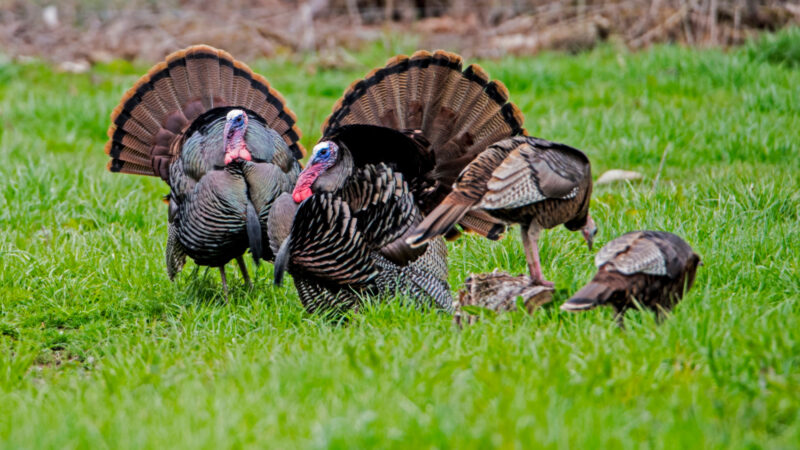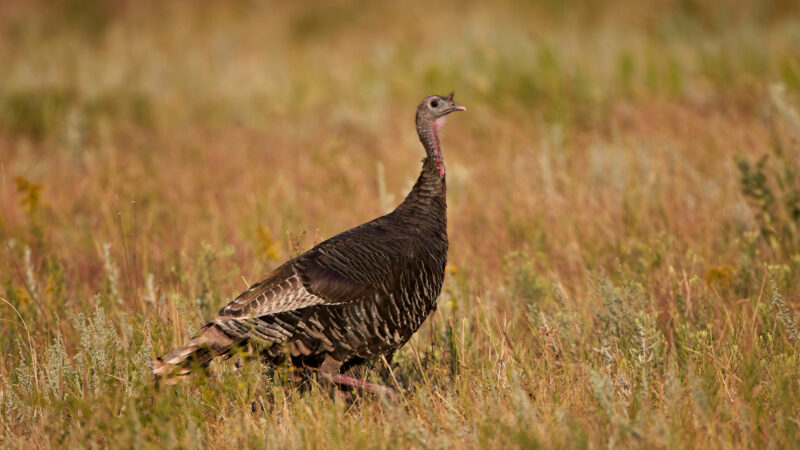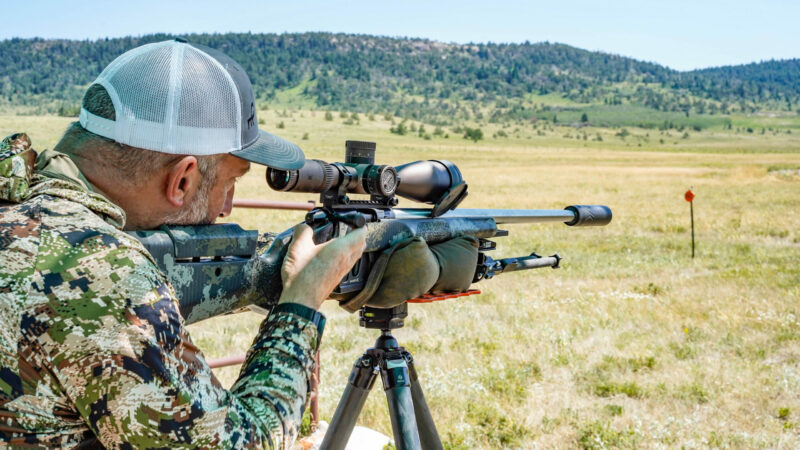Weatherby Orion SxS Review
Pity the designer of a mass-produced side-by-shotgun. Not only are you trying to appeal to a vanishingly small customer base, but each choice — whether stylistic or functional — risks alienating half or more of your buyers. Do you go with a classic straight stock, a Prince of Wales, or a semi-pistol grip? Splinter or beavertail fore-end? Ejectors versus extractors? Do you go with the sleek, low-profile sidelock action or the taller but arguably more reliable boxlock? Do you have a single trigger and selectable barrels or a classic double-trigger design?
The problem is that side-by-side shooters are a notoriously opinionated bunch, and designs that don’t fit their ideal are dismissed with a shrug and a sniff. Despite — or maybe because of — the fact that I own three dissimilar side-by-sides, I pretended I was immune from these biases.
Then I opened the box containing Weatherby’s new side-by-side Orion shotgun. I thought for a moment that I had gotten a pre-production model. The wood was curiously bland, and the lack of even a border scroll on the matte-black sidelocks seemed more undone than an intentional design feature. The extended choke tubes, with their Atoll Blue accents, reminded me of my junior-prom cummerbund. Besides, I sniffed, who mars the elegant lines of a side-by-side with protruding choke tubes? Maybe the brand that stamps its name in gold letters on the sidelock, that’s who.
Weatherby Orion SxS Specs and Features
· Gauge: 20 gauge, 3-inch chambers
· Other Available Gauges: 12 gauge and .410 bore
· Action: Round-body boxlock and shell extractors
· Stock: Straight English stock with splinter fore-end, oil finish, slight cast off
· Barrel: 28-inch monoblock with extended choke tubes: Skeet, IC, Mod, IM, Full
· Triggers: Mechanical double triggers; front trigger fires right barrel
· Safety: Ambidextrous tang
· Length of Pull: 13.75 inches to rear trigger, 14.75 inches to front trigger
· Drop at Comb: 1.5 inches
· Drop at Heel: 2.375 inches
· Overall Length: 46 inches
· Weight: 6 pounds, 12 ounces
· Price: $1,099 (under $1,000 street price)
Weatherby Orion SxS Review Highlights
· Affordable and versatile
· Suited to both waterfowl and upland hunting
· Classic styling, Turkish manufacture
· Average lead-shot pattern percentage: 83 percent at 30 yards
· Average steel-shot pattern percentage: 81 percent at 30 yards
Pros
· Good handling
· Decent wood
· Versatile choke combination
· Reliable mechanical double triggers
· Durable design
· Classic shotgun styling
· Excellent value
Cons
· Forgettable cosmetics
· Safety hard to deploy with gloves
Weatherby Orion SxS In the Field
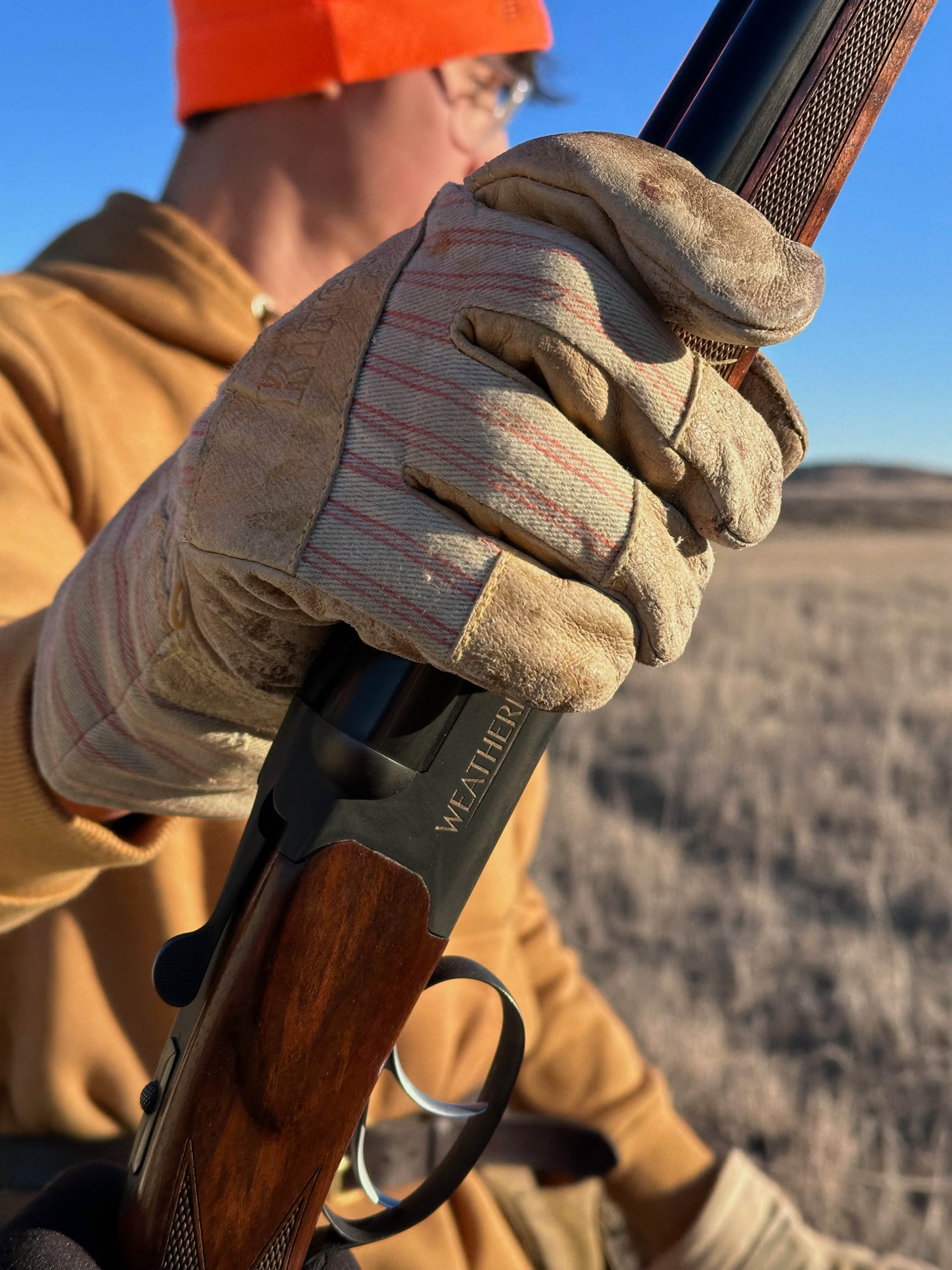
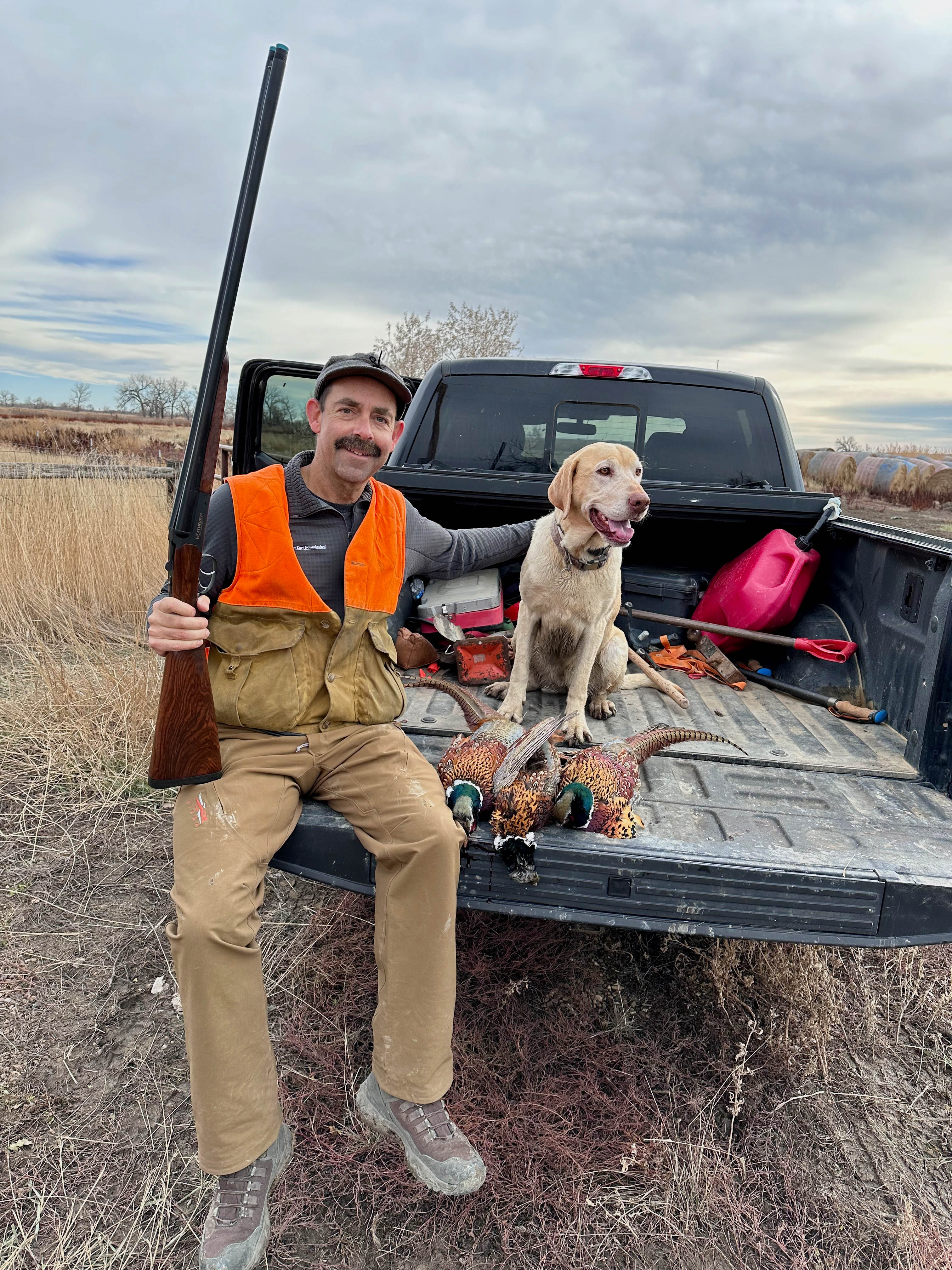
The first few swings of the gun, fresh from the box, didn’t tingle my hands with expectation or warm my heart with affection. The 28-inch barrels seemed too front-heavy, the sunken rib didn’t especially guide my eyes to the corner of the room, and the length-of-pull to the front of the two triggers was awkwardly long for my finger.
Then I took the Orion hunting. I broke it in on grain-bin pigeons, then shirtsleeve doves before I carried it for miles across eastern Montana’s sharptail and partridge benches. I shot limits of prairie-pond ducks with it, and I just cleaned it this week — for the first time — after its last outing, the scratch-and-dent indignities of late-season Montana roosters.
Even after a satisfying season hunting with it, the Orion SxS is not the shotgun I reach for before all other upland guns. That designation belongs to my Connecticut Shotgun Manufacturing Company’s RBL, a side-by-side 20 with exhibition wood and the dog-legged cast-on that fits my extremely left-handed frame. Also in my rack is CZ’s Project Upland version of its popular Bobwhite, a workaday side-by-side that serves as a useful comparison to the Orion. And I have an 110-year-old old Fox Sterlingworth with pitted bores that rarely sees the field these days.
My conclusion, after an eventful bird season, is that the new Weatherby has enough field talent to emerge as a great buy for entry-level side-by-sides, and even its questionable features make much more sense now than they did back in the pigeon-slumming days of August. In other words, I’m no longer sniffing at some of the stylistic choices that Weatherby made to bring a capable side-by-side to market for under $1,000.
Weatherby Orion SxS: A New Turkish Shotgun
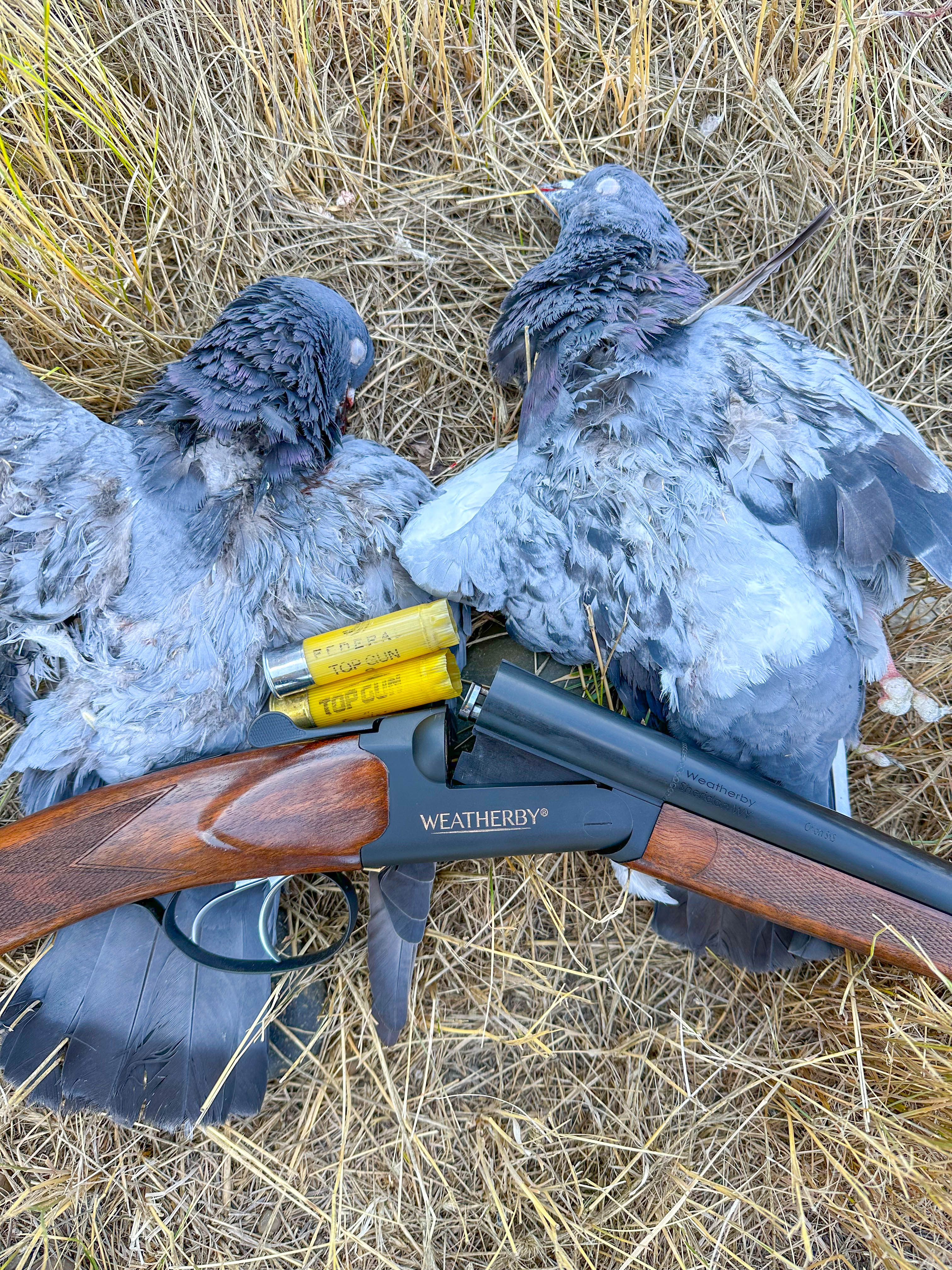
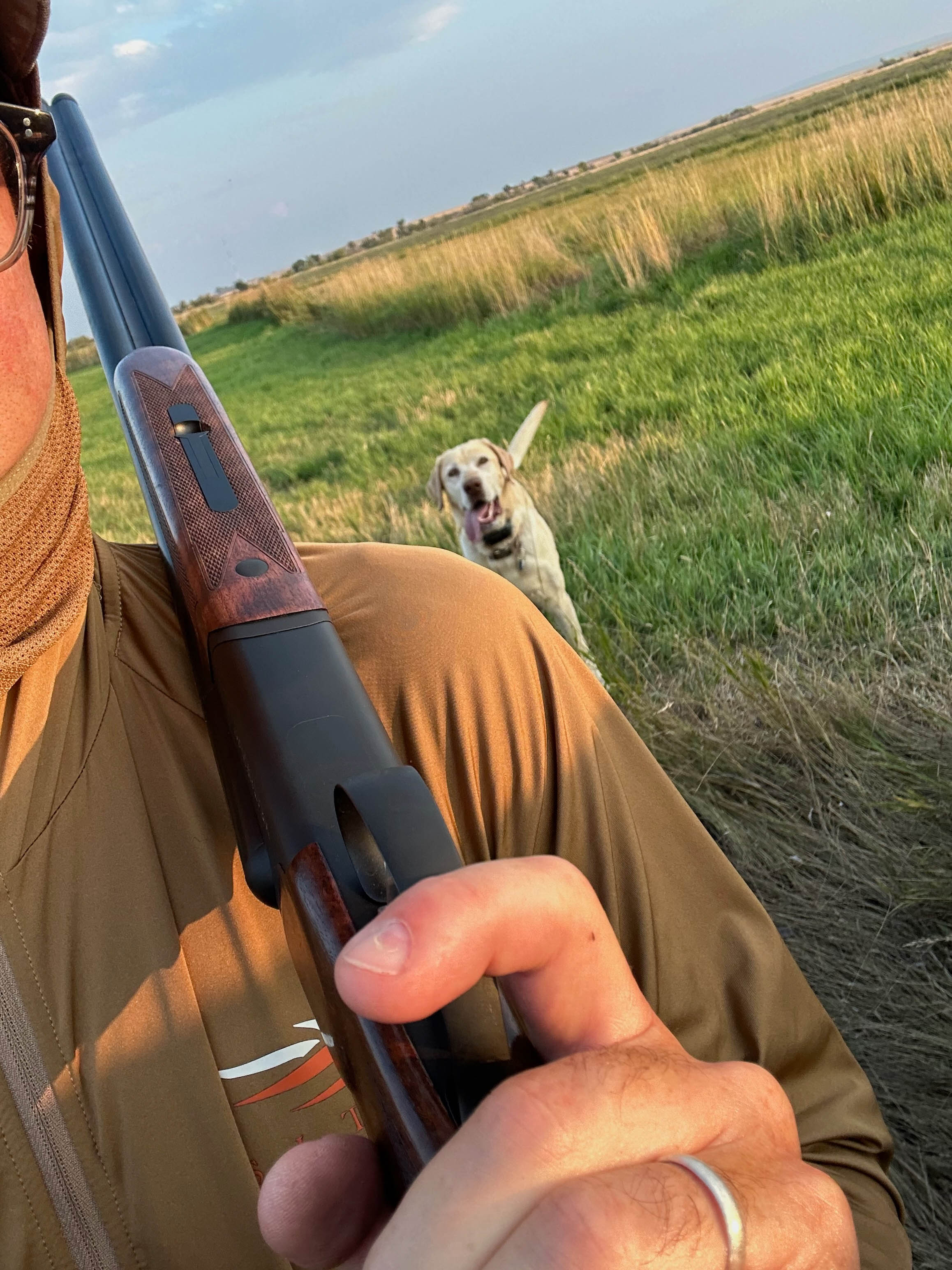
While a side-by-side has been absent from Weatherby’s catalog for several years, the company has a quarter-century relationship with the platform. The original Weatherby Orion side-by-side was a Spanish model, discontinued in 2003. Weatherby later collaborated with Fausti to produce the Athena D’Italia, as you might guess made in Italy. Weatherby’s over/under Orion has been in its catalog since 2014.
The latest Orion side-by-side is being produced by mid-sized Turkish shotgun manufacturer Yildiz, according to Kyle Killen, Weatherby’s international sales manager and product manager for the new shotgun project. You might know Yildiz as the producer of Academy Sports’ line of very good and very affordable shotguns.
Killen says the guiding principle for Weatherby’s project was to produce “a great gun that was affordable to a blue-collar guy.”
He noted that the process of producing a price-point side-by-side is one of give and take. Mostly take.
“Price does affect things to a large extent,” says Killen. “As we were sourcing this gun, inflation was rampant and we weren’t sure where we’d need to land for a price point, so there were a lot of guesses involved with features and pricing. We could have thrown ejectors on it, or stuck with extractors. We could have engraved the receivers, or traded that [metal] work for better wood. We could have gone with a super-cheap build, but then you see problems with barrel regulation.”
Killen said he was guided by the design and performance aesthetics of a previous generation of side-by-sides: the Fox Sterlingworth and Winchester’s Model 21. That Fox, made in Philadelphia prior to World War I with little adornment but plenty of field attributes, was the working-class shotgun of the Gilded Age. The Model 21 was the next generation’s field gun, produced from 1931 through 1959 with a similar unadorned style.
“I wanted to build a gun with a clean receiver like that Model 21,” says Killen. “Work-horse guns that had deep bluing on the receiver. It turns out, in modern manufacturing, that keeping the scroll work to a minimum means we can put that cost into better wood. Besides, even a little bit of scroll work would be laser-dot, and it wouldn’t look that great.”
This is why my Weatherby has such plain metal, and why most models have relatively better wood. The production Orion has grade II wood, with a bit more figure and depth than you find in most entry-level guns’ grade I stocks. Its wood-to-metal finish is better than you’d expect on an entry-level side-by-side, and the Orion has some nice features, like a long tang trigger guard that ends in a nib, nicely indexed screws, and what’s called a swamped rib that’s barely visible over the sight plane of the barrels. The rib is finished in a bright brass bead. The splinter fore-end is nicely tapered, and the wrap-around checkering provides plenty of grip for the leading hand. Wood finish is somewhere between oiled and gloss. The Orion has a manual tang safety.
The Weatherby occupies a fairly lonely niche in the shotgun market: a side-by-side that retails for under $1,200. Its main competitor, now that CZ has discontinued its excellent Bobwhite G2, is the Tristar Bristol, which retails for about $1,200 and features case coloring on the receiver, an English stock, five chokes, and a single trigger with ejectors.
Budget-minded side-by-side gunners can also consider Stoeger’s Uplander Field Shotgun, an all-business shotgun that’s available in 12, 20, 28, and .410. It retails for around $500. Stoeger also makes a higher-grade Uplander Supreme that retails for around $600, and it produces a shorty version (the Upland Compact) and a 30-inch-barrelled Longfowler.
But you have to jump up to about $3,000 to find the mix of performance and style that make side-by-sides such distinctive and beloved shotguns.
Weatherby Orion SxS’s Versatility
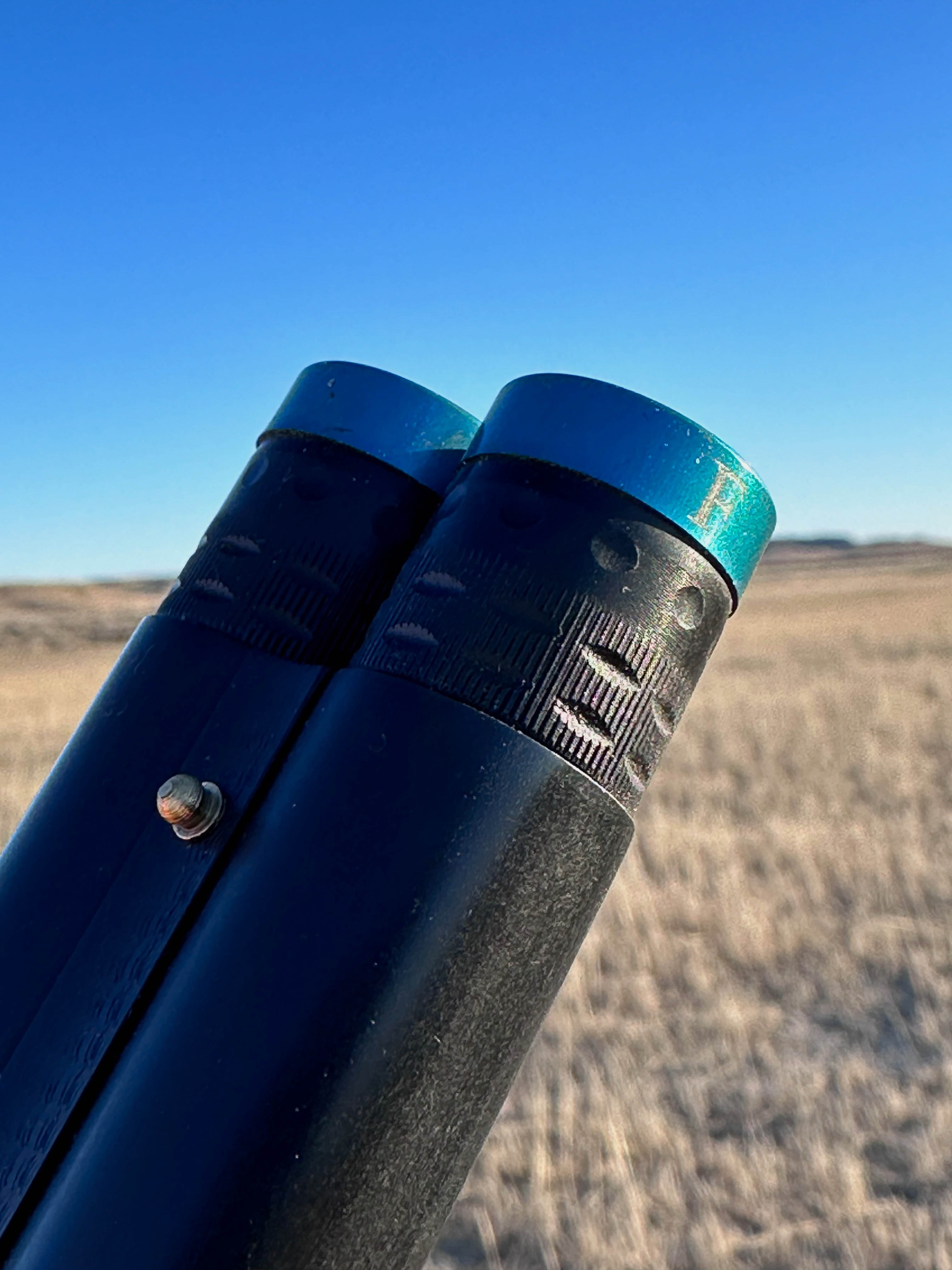
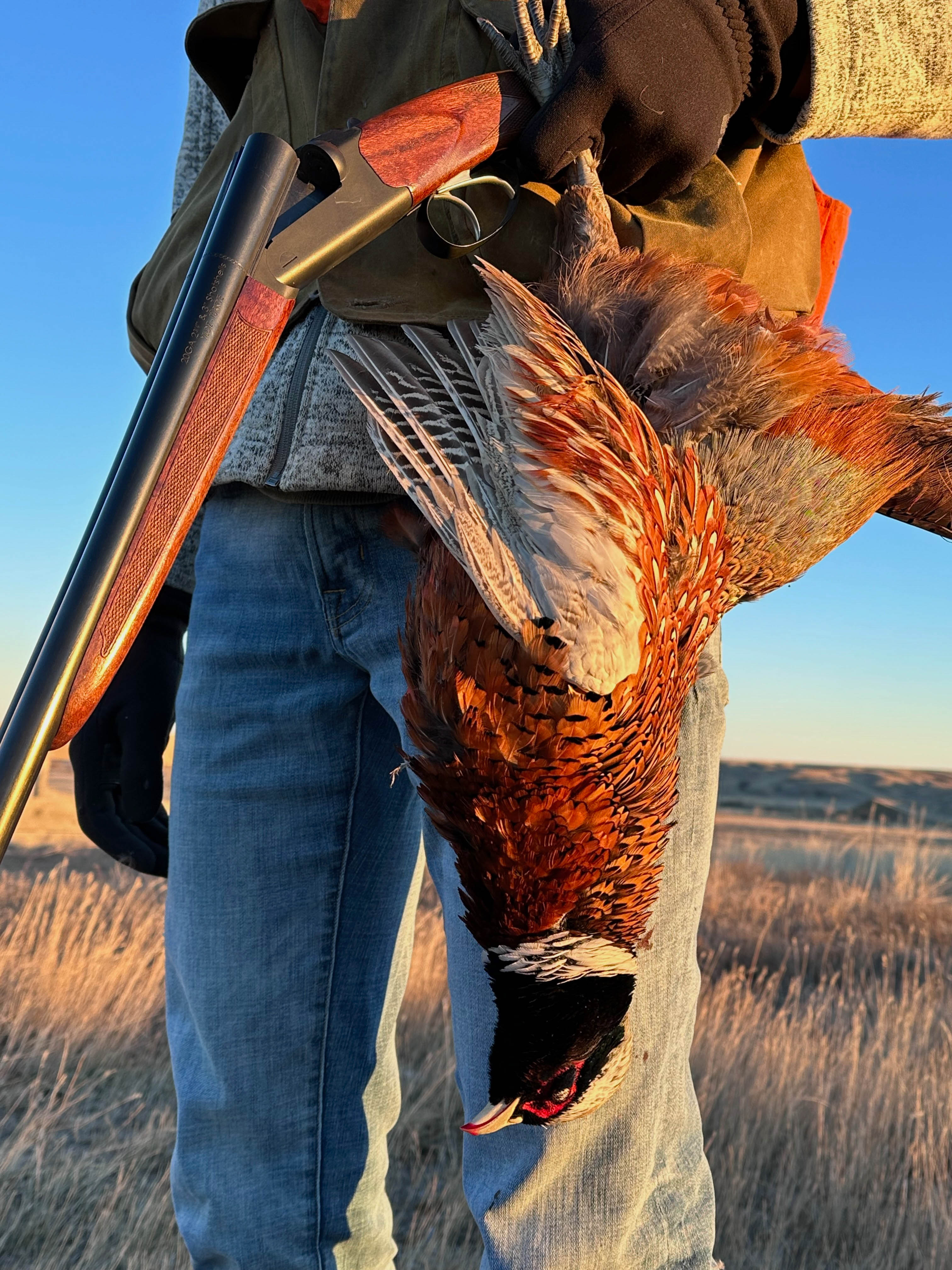
While I still sniff at those extended choke tubes (the Orion ships with five tubes made by Yildiz with aftermarket options from Briley), I found my 20-gauge to be adept at pretty much every hunting task.
The monoblock 28-inch barrels are about right, though the tubes add 7/8 of an inch and seem even longer. Compared with the 26-inch barrels on my RBL, the Weatherby handled long crossing shots better, though it wasn’t as fast or intuitive on quick-flushing Huns and pheasants.
The 14.75-inch length of pull to the front trigger (it’s an inch shorter to the rear trigger) is slightly long for me but otherwise the gun fits, both in T-shirt weather of September and the sweater-and-coat conditions of Montana’s late season. The Weatherby’s 6-pound, 12-ounce heft is light enough to carry all day but swings with authority. Its balance is a little barrel-heavy compared to my RBL and CZ side-by-sides.
Out of the roughly 200 field loads fired through it, the only malfunction I experienced was with both barrels loaded with Hevi-Shot’s rooster-thumping HEVI-Hammer, a 3-inch, 1-once payload of No. 3 shot. I swung on a flushing pheasant, touched off the front trigger, and was plenty surprised that both barrels discharged. My finger must have slid off the front trigger under heavy recoil and deployed the rear trigger. Not surprisingly, the rooster didn’t survive the double dose of bismuth. (The problem, I should note, was not with the gun but with its operator.)
I fed the Orion a steady diet of lead, from 7/8-ounce No. 8 dove loads to 1-ounce No. 6 grouse loads, before switching to steel (3-inch, 7/8-ounce loads of No. 4 shot) and then a wide range of bismuth and tungsten loads. The Weatherby patterned two loads especially well: Winchester’s No. 4 1-ounce bismuth and Federal’s No. 5 1-ounce Prairie Storm lead. Both have become my go-to late season pheasant loads, and deliver about 80 percent of their shot in a 30-inch circle at 30 yards through the Orion’s Improved/Modified and Modified chokes. The Weatherby’s other chokes are Skeet, Improved Cylinder, and Full.
Since I keep harping on these extended choke tubes, it’s fair to provide Killen’s perspective. He’s heard from plenty of side-by-side purists about the protrusions, which he says are mainly designed to pattern steel shot reliably.
“We tested both flush and extended choke tubes extensively, and noted that harder, more elastic steel shot patterned noticeably better with those extended tubes because they have a half-inch more parallel constriction compared to internal tubes,” says Killen. “Overall, it was important to me to embrace the traditions of classic side-by-sides, but the one tradition we had to go away from was [to introduce] the extended choke tubes. We’re seeing a lot more public refuges and wildlife management areas shifting to non-toxic, even for upland hunting. We wanted to build a future-proof gun that could handle any load in any situation with any choke constriction.”
Patterning the Weatherby Orion SxS
I had to test this proposition, and patterned my Orion with IM choke in the left barrel and Modified in the right barrel. I put a combination of Prairie Storm No. 5, HeviShot’s HEVI-Bismuth No. 5, Winchester’s excellent Bismuth No. 4, and Winchester’s new 1-ounce, No. 5 Diamond Grade load through both barrels and both mid-constriction chokes. I then shot the same combination of barrel and choke with Winchester’s Xpert HV No. 4 steel. I considered shooting No. 1 shot, since I had used that shot size for some of my duck hunting but stuck with a load that easily covers both ducks over decoys and upland birds.
The lead and bismuth loads averaged 83 percent patterning in the IC choke while the steel loads patterned at about 78 percent. (That’s the percentage of total pellets in each given load divided by the actual impacts in a 30-inch circle.) Given the forgiveness of lead and soft-as-lead projectiles in patterning tests, those are pretty equivalent results.
In the Modified choke-and-barrel combination, the lead-and-bismuth loads patterned at 85 percent while the steel load patterned at 83.5 percent, again pretty equivalent and a good testament to the excellent performance of those unfortunate extended chokes.
Over the course of the season, I found myself grabbing the Weatherby more and more, and I also loaned it to my kids and my friends on our frequent Christmas-break pheasant hunts. Some shot the side-by-side better than others, but that’s to be expected with a design that takes some adjusting to, especially for those shooters who grew up on semi-autos.
My final analysis: It’s an excellent combination of value and performance. The 3-inch chambers and five choke tubes allow it to transition from dove fields to duck blinds and even into spring turkey season. The steel trigger mechanism is built for strength and durability, and the gauge-specific frame on the 20 and 12 gauges are appropriately sized. I haven’t handled the .410 Orion, which was released in the late fall, but it’s apparently also built on a size-specific frame.
The best thing I can say about the Orion is that it will wear years of hard use in stride, and its steady, even performance will eventually charm even the sniffiest upland hunter.
Final Thoughts
This is an extremely solid effort from Weatherby’s importers. The Orion offers a ton of versatility and value in a classically styled side-by-side that is built for years of hard hunting and can digest a wide variety of payloads. The action is strong and simple, the wood is honest, and the craftsmanship is a notch above what you’d expect for a sub-$1,000 side-by-side. It’s a shotgun that you won’t feel bad about abusing, but it’s designed to wear its field use in stride. It won’t win many beauty contests, and may be insulting to some side-by-side purists, but its capacity for putting birds in the bag is undisputed.
The post Weatherby Orion SxS Review appeared first on Outdoor Life.
We may earn revenue from the products available on this page and participate in affiliate programs. Learn More ›
Source: https://www.outdoorlife.com/guns/weatherby-orion-sxs-review/



